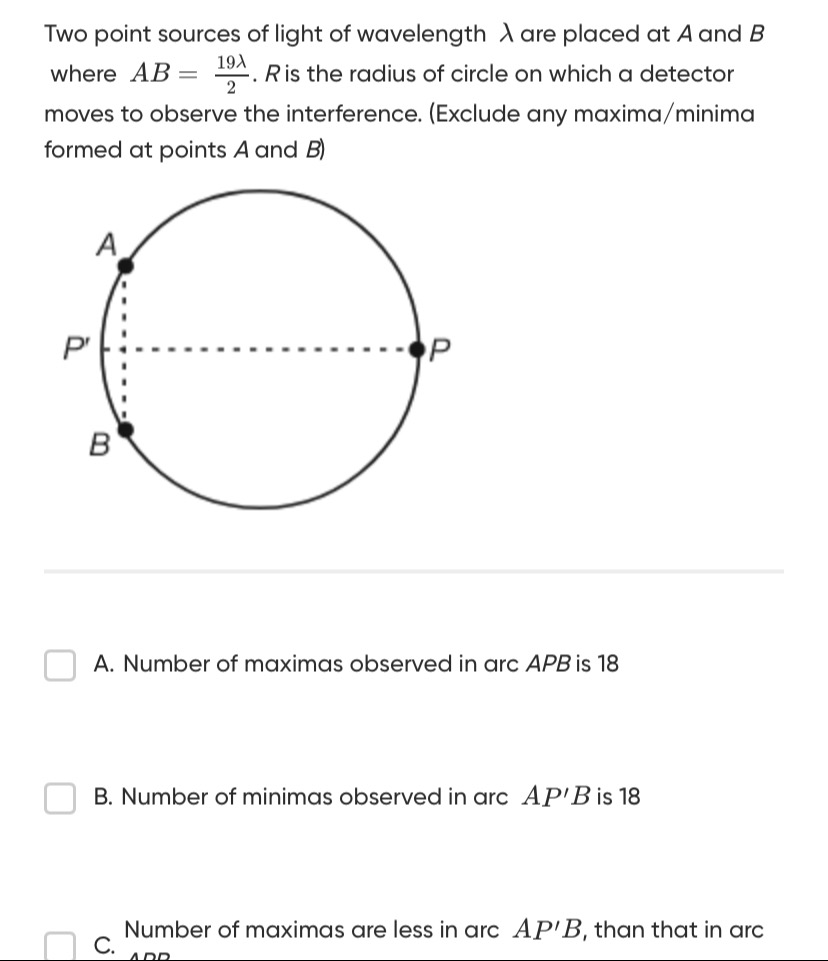Question
Question: Two point sources of light of wavelength $\lambda$ are placed at $A$ and $B$ where $AB = \frac{19\la...
Two point sources of light of wavelength λ are placed at A and B where AB=219λ. R is the radius of circle on which a detector moves to observe the interference. (Exclude any maxima/minima formed at points A and B)

Number of maximas observed in arc APB is 18
Number of minimas observed in arc AP′B is 18
Number of maximas are less in arc AP′B, than that in arc APB
A
Solution
The number of maxima observed in a full circle for two point sources separated by a distance d is approximately λ2d. In this case, d=219λ, so the number of maxima in the full circle (excluding the sources A and B) is approximately 2×λ19λ/2=19.
The points P and P' are on the perpendicular bisector of AB. Since the path difference from A and B to P is equal (AP=BP), P is a point of constructive interference (a maximum). Similarly, P' is also a point of constructive interference.
The arc APB is the larger arc connecting A and B, and the arc AP'B is the smaller arc. Generally, the number of fringes is distributed between the two arcs. Since APB is the larger arc, it is expected to contain more maxima than the smaller arc AP'B.
If we consider the total number of maxima in the full circle (excluding A and B) to be 19, and if the number of maxima in the arc APB is 18, then the number of maxima in the arc AP'B would be 19−18=1. This distribution (18 in the larger arc, 1 in the smaller arc) is plausible, indicating a significant asymmetry in fringe distribution, which can occur when the sources are not at the center of the circle.
Let's verify option C based on this assumption. If there are 18 maxima in arc APB and 1 maximum in arc AP'B, then the number of maxima in AP'B is indeed less than in APB.
Now let's consider option B. If the number of minima in arc AP'B is 18, and the total number of minima in the full circle (excluding A and B) is also approximately 19, then the number of minima in arc APB would be 19−18=1. This means that in the smaller arc AP'B, there are 18 minima, and in the larger arc APB, there is only 1 minimum. This is a highly skewed distribution and less likely compared to the distribution of maxima.
Therefore, option A is the most consistent with the principles of interference and the geometry of the setup.
